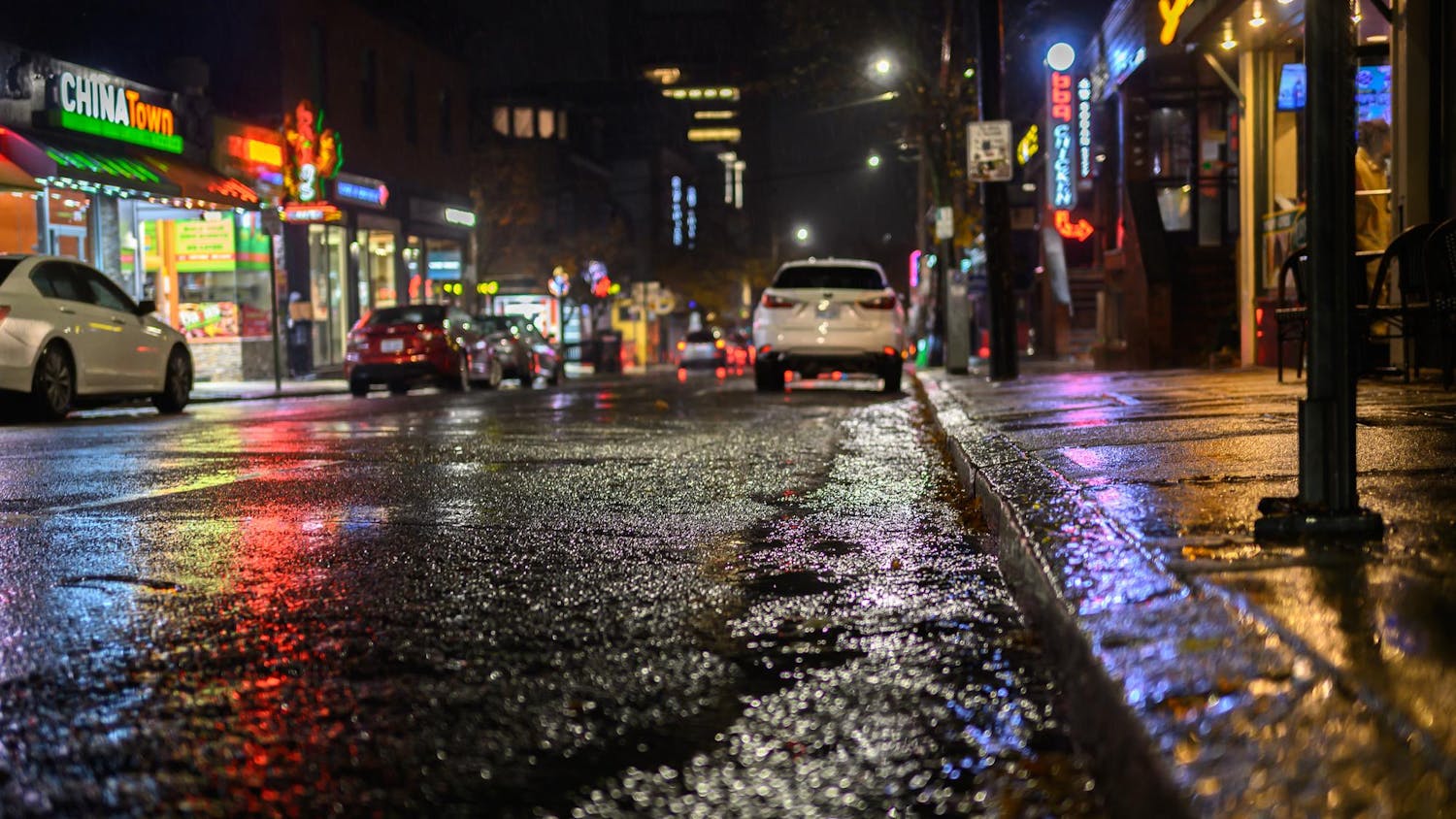Fall brings out the beauty of trees. But in many cities, including Providence, there is not enough foliage to compete with the concrete and asphalt.
As a result, urban areas are much hotter than their surroundings areas — a phenomenon called the urban heat island effect.
In a report released last May, the spring 2010 class ENVS 1920: "Analysis and Resolution of Environmental Problems and Case Studies," found that areas of Providence with fewer trees are hotter than greener neighborhoods. Trees are crucial to human health and happiness in a variety of ways — they remove pollutants from the air, provide shade and add beauty to their surroundings.
Providence has been steadily warming, a foreshadowing of hotter summers that will tax residents' health and the city's infrastructure. By the close of this century, Providence could experience two to four weeks of temperatures over 100°F, according to the class's research.
‘Essentially tree-less'
The environmental studies students used satellite data to find a correlation between vegetation cover and surface temperature in Providence neighborhoods. Downtown Providence, Federal Hill, Upper South Providence and Lower Olneyville and Valley — the least vegetated areas of the city — had the highest summer surface temperatures.
The students also found a clear correlation between tree coverage and asthma cases. Fewer trees "means more hospital trips as a result of asthma," wrote Cecilia Springer '11 in an email to The Herald. Springer contributed extensively to the class's final report, "Trees and the Urban Heat Island Effect: A Case Study for Providence, R.I."
The solution? Plant trees.
Providence has about 25,000 street trees, which cover about 23 percent of the city. The goal of Trees 2020, a 2008 initiative to plant trees in Providence, is to increase that coverage to 30 percent by 2020 — an undertaking that would require 3,333 trees to be planted each year. But currently, only 1,100 trees are planted annually due to funding limitations.
The class's report recommends targeting low-income communities such as Federal Hill and Upper South Providence, which would benefit the most from increased tree planting.
There is a "complicated social side to the issue of having trees equally available for cooling our cities," said Timmons Roberts, professor of environmental studies, who taught the class. According to the report, "proximity to street trees and urban green spaces consistently favors homeowners to tenants and the wealthy to the poor" around the nation.
"It's easy to take the beautiful Brown campus and the East Side of Providence for granted," Springer wrote. "But many areas of Providence, especially low-income neighborhoods, are paved over and essentially tree-less," she wrote.
No trees grow in Elmwood
To understand the lack of canopy coverage in some neighborhoods, the class conducted a survey in May 2010 to assess residents' perceptions of trees. The students surveyed the Elmwood district in southern Providence based on its low canopy cover of 16.3 percent.
"There wasn't a single tree on the street," Roberts said.
Kai Morrell '11, outreach coordinator for the Department of Facilities Management, said she was surprised by how much people had to say about trees. "Trees are something that everyone sees," Morrell said, "Even if they aren't environmental scientists, their opinions are still important."
A handful of people did not want trees in the neighborhood, citing expensive damage caused by tree roots such as blocked sewage pipes and cracked sidewalks.
But the class found that for every dollar spent on planting and maintaining trees, the city of Providence reaps $3.33 in benefits. Trees lower heating and cooling costs, reduce flooding and erosion and raise property value.
Most survey responses revealed that residents appreciated the benefits of trees and were interested in planting more in the neighborhood. Despite this interest, less than a third had heard of the Providence Neighborhood Planting Program, which assists residents with tree-planting at no cost.
Roberts said he hopes the report, along with efforts by Providence City Forester Doug Still, will bring Rhode Island policymakers' attention to the need for more resources for the state's tree programs. The report identifies several funding opportunities that the state could take advantage of to increase planting.
"There could be more money for this — not enough people know about it," Roberts said, "The people who know about it are separate from the ones who most need the help."
Morrell said that surveying community members was an eye-opening experience that illustrated the connection between social and environmental issues.
"Classes like these — where students get out into the community and talk to residents of Providence — are an important thing for Brown students to experience," Morrell said. "We're residents of Providence, and we should contribute and know something about that community."
Students can help mitigate the urban heat island effect by volunteering for one of the tree planting efforts, Roberts said.
"College Hill is sort of an island, but College Hill will rise and fall with Providence," he said. "We need to take care of this place and the people."
Natalie Villacres is a senior staff writer for The Brown Daily Herald covering the University Hall beat. She previously covered activism for Metro News. Natalie is a sophomore from Queens, NY studying psychology and education.




